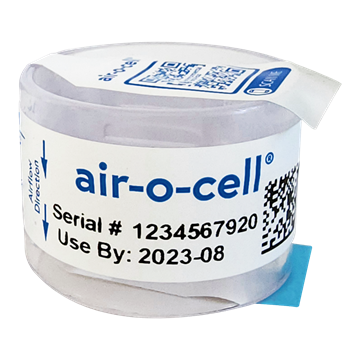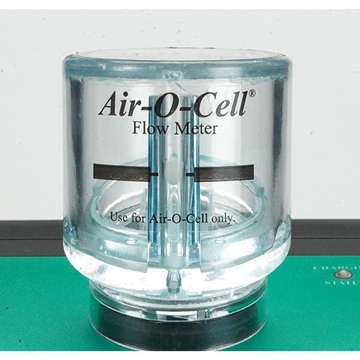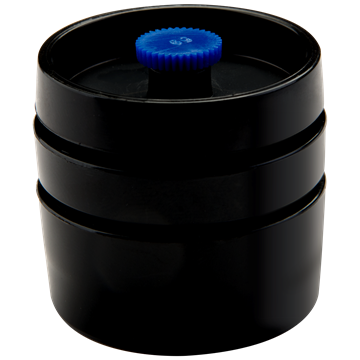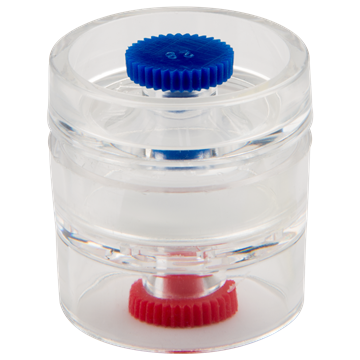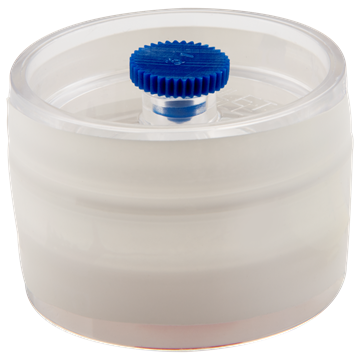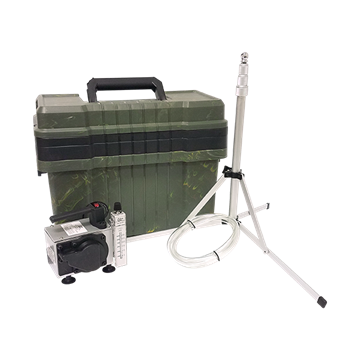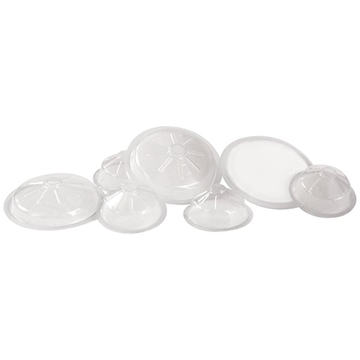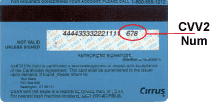-
-
If there are multiple methods for the chemical you are sampling, it is your discretion which one you use. Keep in mind that if you are sampling to comply with OSHA regulations, any inspector will use the OSHA method to determine compliance.
-
Sample blanks are required as a quality assurance measure in your air sampling program. They help ensure the integrity of your samples by identifying any background levels of the contaminates being sampled
-
Various trace metals will show up in filter membranes from time to time. This is why the sampling method requires sample blanks. By using the trace amounts from the sample blanks and subtracting this from your sample amount, you have the most accurate reading.
-
Maybe. If you have the serial number on the label, we may be able to look it up. If you do not, unfortunately, there is not much we can do. Please contact us if you have the serial number and need a weight reference.
-
Match weighed cassettes have the filters matched within a specified amount (20, 50 or 100µg). If the sample amount collected is less than the difference in weight of the 2 filters, it is possible to have a negative weight if the heavier filter is on the bottom. This is not an error in the product. This would be an indication that either not enough of a sample was taken or it is a very clean environment.
-
Yes, it does. The cassettes are color coded to identify the type of filter inside the cassettes. This is done for easy identification by field personnel. The color codes are as follows:
- Blue: 0.8µm MCE Filter
- Red: 5.0µm PVC Filter
-
Over time, filter membranes naturally will degrade. Although we do not specify an expiration date on most products, Zefon recommends using the product within 18 months of the date of purchase along with storage at room temperature in a climate controlled room to ensure the best performance. Note: This does not apply to product which have a specific expiration date (e.g. Air-O-Cell® or Via-Cell®).
-
All air sampling cassettes sold by Zefon are manufactured by Zefon. Beginning from the processing of the raw plastic to the finished product, Zefon handles it all the way. This allows us to control the quality very tightly.
-
The number is a non-repeating serial number that is provided to you for traceability purposes and sample identification.
-
The best (and most accurate) way to calibrate a pump is with a 'primary' calibration device. These devices include bubble meters/tubes, dry gas meters an piston calibrators including the Bios Defender, the Gilian Gilibrator, Zefon DigiCal and the TSI Primary Flow Meter.
A rotameter flow meter may also be used, however it is considered a secondary calibrator and should be verified for accuracy against a primary calibrator.
Some pumps require specialized calibration devices. Please consult the owners manual of your pump to verify if any special calibration devices are required. If you need help regarding calibration, please contact your Zefon sales representative.
-
The type of impeller fan motors used in the Bio-Pump® are easily affected by backpressure. Backpressure is created by small orifices (even 1/4" openings), tubing and the length of tubing used. Since most standard calibrators either use 1/4" fittings or require power to move a piston, the backpressure they create on the pump is not representative of actual use and this alters the flow reading.
Zefon has designed the Bio-Pump® flow meters to simulate the exact backpressure the pump is subjected to during use with a cassette inline. Because of this unique design, this flow meter cannot be used with any other pump.
Verification of the flow indicators provided with the Bio-Pump® may be performed using a TSI 4046 Primary Flow Calibrator, which is considered a primary standard and is available with NIST certification.
-
The Air-O-Cell® is a direct read total particulate air sampling device. It works using the inertal impaction principle similar to other spore trap devices. It is designed for the rapid collection and analysis of airborne particulate including bioaerosols. The particulate includes fibers (e.g. asbestos, fiberglass, cellulose, clothing fibers) opaque particles (e.g. fly ash, combustion particles, copy toner, oil droplets, paint), and bioaerosols (e.g. mold spores, pollen, insect parts, skin cell fragments).
-
Whenever there is an indication that an airborne particulate problem might exist. the Air-O-Cell® is suitable for use in a variety of settings. IAQ investigations, industrial use, hospitals, homes and cleanrooms.
-
The Air-O-Cell® is a simple to use disposable device which gives fast results about the type and concentration of particulate in the air. It can be used during routine inspections and investigations to determine if there are abnormally high concentrations of fibers, opaque particles or bioaerosols.
-
The lab will send you a detailed analysis report showing the airborne aerosol concentrations for each Air-O-Cell® sample. The report will usually have several categories with associated sub categories (ex. mold spores, pollen, etc). This will give you a good snapshot of what was in the air when the sample was taken.
-
The Air-O-Cell® is the first cassette styled sampling device of its kind which comes ready to use. It is also the only spore trap device to have actual theoretical calculations verified experimentally. There is no time spent preparing slides, ordering agar or decontaminating equipment. Compared to other spore traps, the Air-O-Cell®'s unique adhesive gives the user a longer shelf life, higher tack, more consistent surface, better optical clarity, permanent archive capability and no sample loss during staining. In addition, the Air-O-Cell® has a superior bioaerosol collection efficiency and quantifies fibers and opaque particles. The Air-O-Cell® is economical, works with standard sampling pumps and requires no large investments. The compact design allows use in tight or confined spaces and will provide results overnight. This compares to traditional sampling methods which can take 5 days to culture.
-
The Andersen/A6 Impactor collects samples of particles to be cultured and will only report on what was viable (living) when the sample was taken. The Air-O-Cell® collects and provides results on both viable and non viable particles because the analysis method is direct microscopy and does not require the particles to be alive
Do you know of anyone who offers training classes in the identification of pollen and spores?
Several courses are taught throughout the year by the McCrone Research Institute. You can contact them directly at:
McCrone Research Institute
2820 South Michigan Avenue
Chicago, IL 60616-3292
Tel: 312-842-7100 Fax 312-842-1078
www.mcri.org
-
The Air-O-Cell® cassette has an expiration date because the adhesive on the slide will lose tackiness. Thus, using the product after the expiration date will result in sample loss.
-
The Air-O-Cell® has a shelf life of 1 year from date of manufacture. Zefon strives to provide them with at least a 10 month shelf life, however there is no guarantee that you will have at least 10 months.
-
Yes. Do not try to remove the label around the cassette. Simply cut the label with a fingernail, screwdriver, knife or cassette opening device. Then slowly and carefully open the housing. Be sure you open it so the slide is resting in place and will not fall out when opened.
-
The best method of removing the slide is to take the end of the slide with no adhesive holding it and tilt the slide up. Once the slide is tilted up, it may be pulled out easily.
-
Please download our
Users Guide for this information.
-
Any pump capable of 15 LPM of flow. Zefon recommends using the Zefon Bio-Pump Plus. This pump is portable, pulls the required 15 LPM and has a built-in timer. Alternatively Zefon can supply you with a suitable linear, rotary vane or diaphragm pump as well which are lower in cost, but require AC power to operate.
-
When using any type of attachment or accessory device, please consult with the manufacturer of that device regarding how collection and efficiency is effected.

























